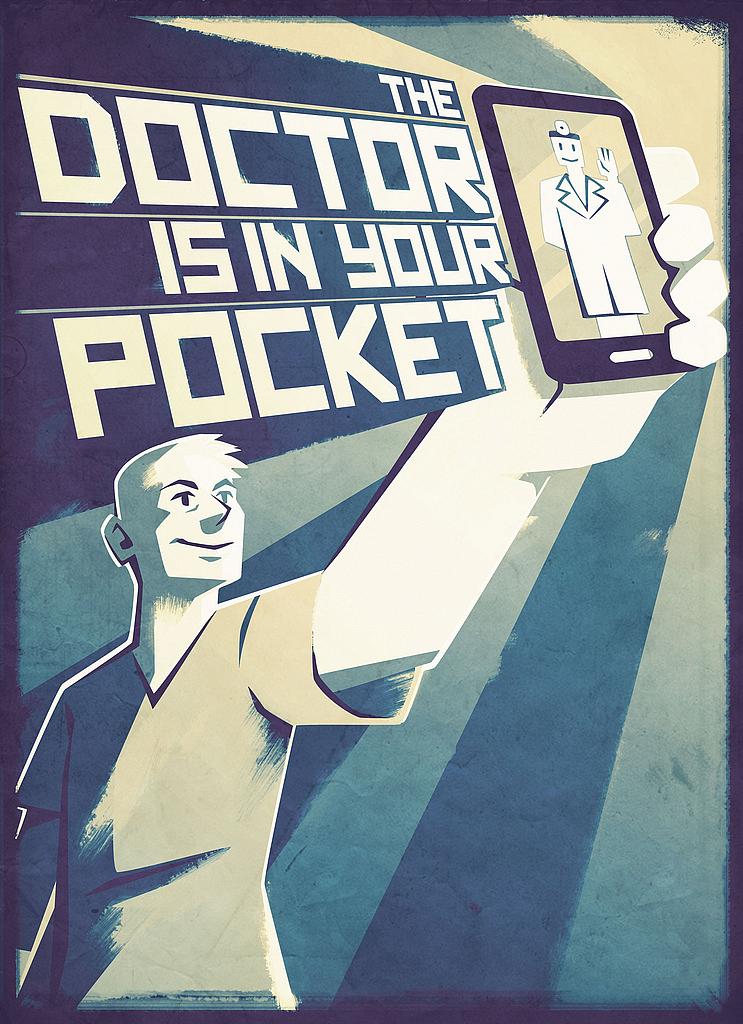Health: There’s an app for that

The Doctor is in your Pocket, Preview of a Health Axiom, Juhan Sonin. Concept by Juhan, Harry and Sarah; Illustration by Sarah Kaiser.
We all love firing up our cellphones to write a text or a tweet, or maybe to engage in a quick game of Candy Crush. But could we turn to the tiny glowing screens to get healthier, too?
Read about the projects of other 2014 California Health Journalism Fellows.
That’s the hope of folks working on what’s come to be known as “mobile health,” or “m-health.” Networked mobile devices such as cellphones, the thinking goes, can promote patient health — by improving communication with healthcare providers and by helping users manage chronic conditions more effectively on their own. Technology also might fill some gaps created as Affordable Care Act reforms change the way doctors do their work.
In tech hubs like Silicon Valley and San Diego, companies are coming up with all kinds of nifty gadgets to do this kind of work. Here in Los Angeles, the X-Prize Foundation is offering a $10 million bounty for the team that invents the best user-friendly wireless device to monitor health and diagnose disease. The journal Health Affairs devoted its February issue to “connected health.” When researchers at UCLA hosted a conference exploring how m-health might be useful for the treatment and prevention of HIV, they got twice as many sign ups as they expected. Many who attended were healthcare workers from local communities, eager to find new ways to help clients.
Given the intense interest, I’d like to embark on a series of stories that will explore the potential this technology has to improve community health. Can the promise translate into real world results? How much of this is hype?
I’ll explain the basics of m-health, and why experts like the ones who attended the UCLA conference think it has great potential to improve outcomes in underserved areas — especially as the “smart phone divide” narrows and more people have access to the technology. I’ll spend time with local researchers, doctors and patients who are experimenting with this stuff, highlighting interventions that seem to be successful, as well as interventions that don’t. What works, and what doesn’t? I’m also wondering what the m-health push means for privacy, and how patients will protect their personal medical data once they start managing their health in the cloud.

